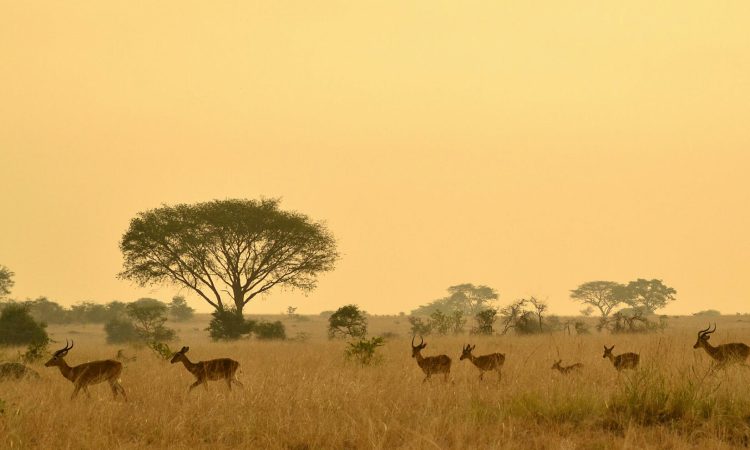Before you go trekking with gorillas in East Africa, you should know how to survive a gorilla attack. Gorillas, specifically the mountain gorilla sub-species, are the world’s largest living primates, weighing more than 400 pounds and standing 6 feet tall when on two legs.
Mountain gorillas are known to dwell within the jungles of East and Central Africa, where the tropical forests of Central Africa intersect with the undulating savannahs of Eastern Africa. Uganda is a famed gorilla habitat with over 50% of the world’s total mountain gorilla population surviving in its 4 distinct regions.
Rwanda follows with more than a quarter of the world’s mountain gorilla population, and D.R. Congo, which has only ten well-habituated mountain gorilla families for trekking purposes.
Despite their immense size, mountain gorillas are known to be peaceful animals, unless they’re disturbed or stressed—more Koko than King Kong. The strength of one mature silverback is equivalent to that of 4–6 men combined. Silverbacks use this energy to defend their families against threats, attacks, and any other possible danger, but not necessarily to attack visitors.
Mountain gorillas are naturally shy animals and tend to avoid direct contact with visitors’ faces; therefore, it is rare and unfortunate for a gorilla to attack a visitor.
When does a mountain gorilla get upset?

A mountain gorilla is primarily a reserved and calm creature but can charge at any time it senses danger. Gorillas display this discomfort by first making several threats—grunts and loud hoots.
These threats escalate into aggression and violent attacks, often accompanied by chest-beating and standing on hind limbs. If no action is taken at this stage, as advised by your ranger guides, a gorilla will charge aggressively, followed by strikes, brutal bites, scratches, and potentially grabbing a leg to drag someone away.
What to do when a gorilla charges?

Be submissive. Always remain submissive and passive if a gorilla attempts to charge at you. Do not raise your voice or arms, as this may signal to the gorilla that you are ready to fight.
Learn gorilla behaviors before the encounter. Read journals and online articles about the behaviors and lifestyle of mountain gorillas to learn how to avoid attacks. One key characteristic of mountain gorillas is their shyness, and direct eye contact can be dangerous.
When in the presence of a gorilla family, pretend to look disinterested or look away to minimize the chance of gorilla attacks and charges.
If possible, crouch down. If a gorilla seems disinterested in your presence or charges, try to crouch down and appear small; the gorilla may perceive you as non-threatening or may decide to ignore you.
Stay calm and do not react. A mountain gorilla may approach or even touch you in a playful manner; do not interpret this as an attack. Remain calm and friendly. Screaming or behaving aggressively can provoke a gorilla.
Fortunately, gorillas are naturally peaceful creatures and do not pose a threat unless provoked or threatened themselves.




















